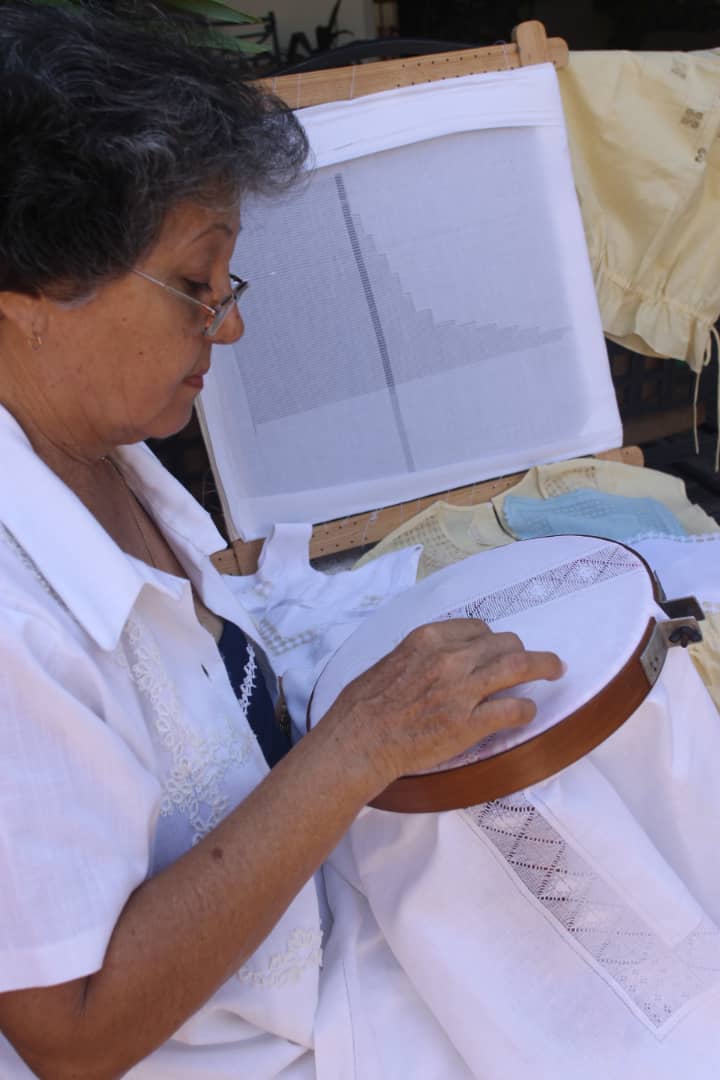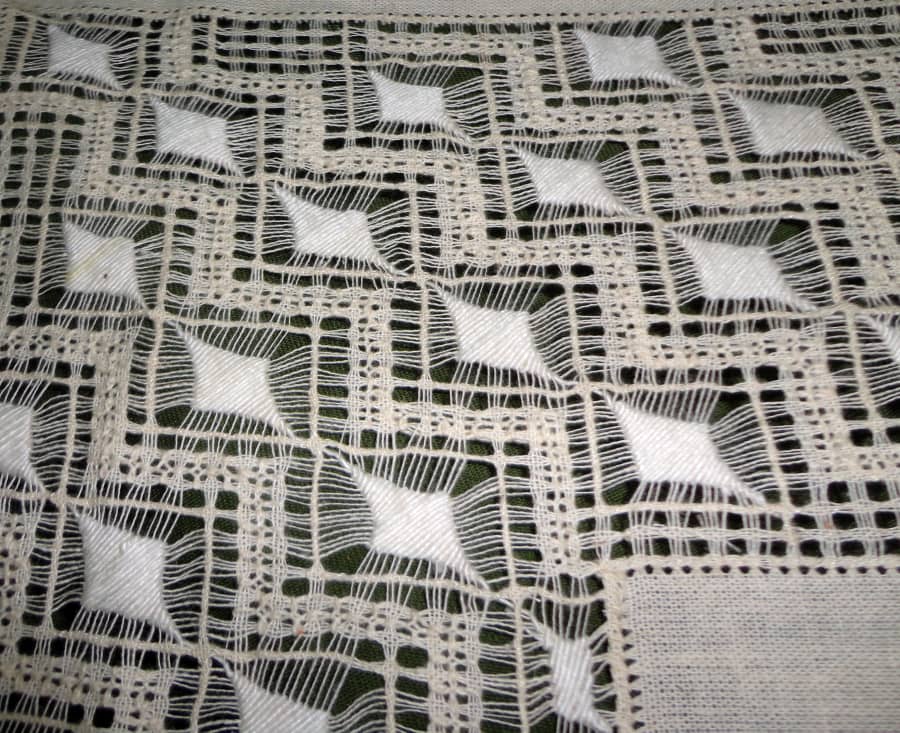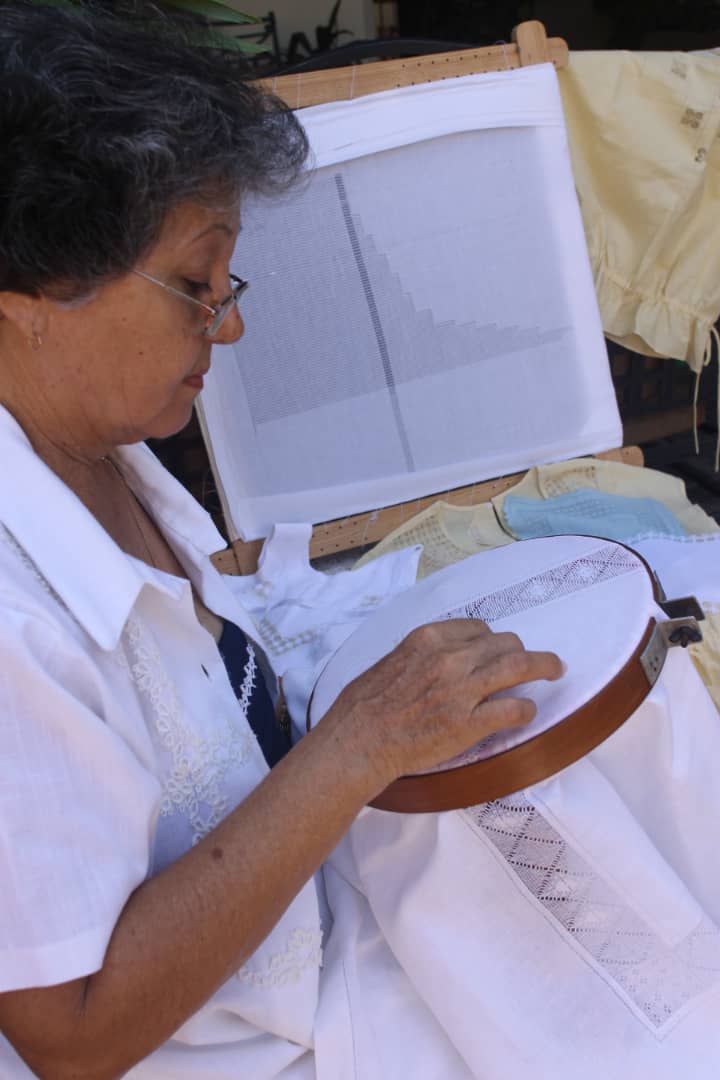Description
De las ricas tradiciones artesanales que se practican en la Villa de Trinidad*, los tejidos y bordados, también llamados “labores de aguja” se destacan por la cantidad de artesanos que lo practican, el nivel técnico y la diversificación de sus aplicaciones.
De origen muy antiguo, estas técnicas fueron introducidas al país a través de la inmigración española que se asentó en la región central, estimulada por el desarrollo de la producción de azúcar, tabaco y café y aunque durante años, era una labor exclusiva de mujeres, hoy también la practican los hombres, como un trabajo ventajoso que le permite la sostenibilidad económica.
Entre los tejidos más practicados se encuentra el crochet, el frivolité y los encajes de Tenerife, de filet (maya) y de bolillo. Entre los bordados se puede señalar el deshilado, el calado, que en Trinidad se identifica con la randa, el bordado al pasado, en cruz, el Richeliu y los trabajos con incrustaciones de otras telas contrastantes.
De todos los bordados se destaca la randa, una técnica de calado mediante la sustracción de hilos de la trama y la urdimbre de la tela y sobre la que se realizan rellenos que forman figuras según un diseño y que se aplica tanto a la lencería como a diversas piezas del vestir. Resulta interesante el rescate del remate tradicional mediante el apresillado o espigueta que cayó en desuso, siendo sustituido por el festón, menos elegante en la terminación.
english
Fabrics and embroidery of Villa de Trinidad.
Of the rich artisan traditions produced in the Villa de Trinidad, weaving and embroidery, also called “needlework” stand out for the number of artisans who practice it, the technical level and the diversification of its applications.
Of very ancient origin, these techniques were introduced to the country, through the Spanish immigration that settled in the Central Region, stimulated by the development of the production of sugar, tobacco and coffee and although for years, it was an exclusive work of women, today it is also practiced by men, as an advantageous job that allows economic sustainability.
Among the most produced are crochet, frivolité and Teneriffe lace, “filet” (Maya) and bolillo (Spain). Among the embroideries, we can point out the fraying, the openwork, which in Trinidad is identified with the randa, the embroidery of the past, in cross, the Richeliu and the works with inlays of other contrasting fabrics.
Of all the embroideries, the randa stands out, a technique of openwork by subtracting threads from the weft and warp of the fabric and on which fillings are made that form figures according to a design, and that is applied both to lingerie and to various pieces of clothing. It is interesting to see the traditional finial by means of the spigot, which fell into disuse, being replaced by the bobbin lace.
Among the woven and embroidered pieces are: bedspreads, tablecloths, layettes, stoles, dresses, blouses, shirts, scarves, fans, etc.




Reviews
There are no reviews yet.